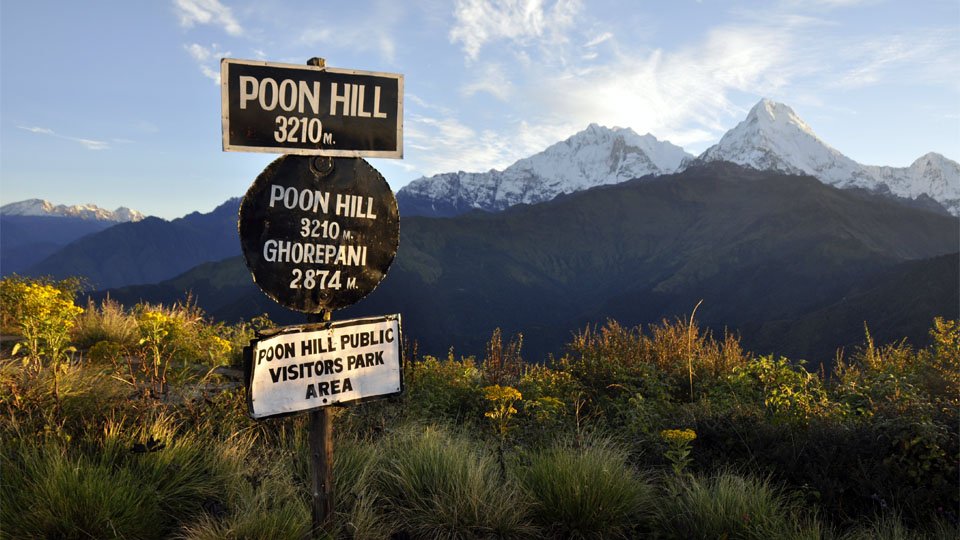Ghorepani Poon Hill Budget Trekking package is popular trekking in Annapurna region offers low budget trekking options. Budget Ghorepani Poon Hill Trek is designed in low cost package with all necessary service. This trekking offers only compulsory service and allows you to select services in your own.
Since its ease of accessibility, the Poon Hill walk is becoming more and more well-liked in the Annapurna Sanctuary. For individuals who are new to hiking and wish to experience trekking in Nepal, this is an excellent path to walk. Three or four days can be spent on the hike. There are plenty of eateries and guesthouses along the well-marked route. When preparing to tackle a more difficult route, such as the Annapurna Circuit trek or the Annapurna Base Camp trek, the Poon Hill trail is a great place to start.
Hiring a licensed guide is mandatory for all foreign trekkers visiting Nepal starting on April 1, 2023. Trekking on your own is essentially prohibited these days. Your remaining options are to either hire a guide or sign up for a tour. Once you’re in Nepal, you can try to arrange for a guide; just be sure the guide is reputable and licensed. Alternatively, you might pre-book the walk with a firm. In this instance, they will organize a guide and plan every aspect of your vacation, including transportation. I can’t speak from personal experience because we have never utilized any companies for trekking in Nepal, but I have located a few excursions that have received positive ratings and may be worth checking out.
Highlights of Poon Hill Trek
- Low budget trekking package
- Sunrise view from Poon Hill
- Ghorepani Village explore
- Exciting views of landscape
- Trekking through farming lands
Overview
Budget Ghorepani Poon Hill Trek is 5 days short trekking from Pokhara. It is one of the most exciting and breathtaking trekking and consider as the evergreen trekking route in Nepal. This budget trekking to Ghorepani leads you to the wonderful historic ethnic villages and first-rate mountain scenario.
Poon Hill Short Trekking Route
Ghorepani Poon Hill trekking is the smooth trekking fulfills your dream to see the glimpse of snow-capped mountain peaks. A short trekking which revel in the Himalayan subculture which provides the lifetime experience. So, it is a famous trek as it is the fast and smooth trek. The path passing alongside the Modi Khola from Kyumi and leads to Ghandruk, which is also connected from Nayapul. Ghandruk is a large stunning village with excellent views of the Annapurna south peak taking to Tadapani and then head west to Ghorepani. The trail maintains thru patchwork valleys, dense mossy past icy waterfalls. Budget Trek to Ghorepani Poonhill additionally offers picturesque mountain villages, forests of brilliant rhododendrons, and an expansion of ethnic corporations and cultures. This complete excellent element makes it a remarkable advent to trekking in Nepal.
Budget Ghorepani Poon Hill Trekking is timely suitable and you could enjoy this superb journey in Nepal Trekking Tour. Ghorepani trekking region has been a fascinating village, inhabited by the bravest and legendary moral institution of Nepal named Gurungs with the unique culture and sound hospitality. The landscape of the Dhaulagiri and Annapurna peaks from the vantage Poon Hill viewpoint [3190m] above Ghorepani are the most incredible mountain escapes on earth. The Hill point mesmerizes with a heavenly view of sunrise and golden coloration perspectives of Annapurna ranges. Poon Hill easy trek is brief trekking trail giving an opportunity to view the terrific Mountains which are above 8000m including prominent Mt. Annapurna, Mt. Dhaulagiri and a few other such as Nilgiri, Machhhapuchhure, Lamjung Himal, Himchuli. Also, you may be astounded by way of the inexperienced hills. From Ghorepani, the trail descends steeply to Nayapul.
The abrupt variant in altitude determined in the way of Annapurna Ghorepani Poon Hill Trek makes it exciting. A Dense forest of rhododendron with hundred’s species of birds, plants, and faunas with deep sub-tropical valleys has made the Ghorepani Poon Hill trekking so special. Similarly, it gives several styles of colorful orchids which can be on show at the side of a clear view of the towering expanse of Mt Annapurna. Annapurna Region Trek can be one of the adventurous treks for those who wish to explore the distinct tradition and heritages, awesome Nepalese lifestyle, views of Himalaya, rewarding nature. On our complete trek, we use the mountain lodges referred to as the tea houses for our feedings and accommodation. You may feel so surprising natural splendor and this journey may be a lifetime memory.





